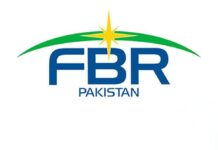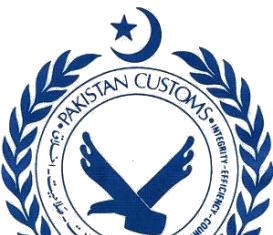Pakistan’s economy remains trapped in familiar cycles, from current account deficits, debt crises to IMF bailouts, and recurring promises of reform repeated umpteen times. Whilefiscal and monetary adjustments dominate public debate, the structural roots of Pakistan’s economic stagnation run much deeper. There are complex multi-dimensional issues but one key aspect which does not get much attention is that the country’s development strategy continues to prioritize large corporates and capital-intensive projects while sidelining small and medium enterprises (SMEs) which are the real drivers of innovation, jobs, and inclusive growth in most advanced economies. In the following paragraphs I will discuss why this is so and what can be done to change this model.
The Structural Bias Toward Big Business
For decades, successive governments have viewed mega-projects as symbols of national progress with mining ventures like Riko Diq, large energy plants, and CPEC infrastructure as some examples of this phenomenon. While these projects are appreciated for attracting foreign capital, they have limited linkages with local industries, do not build domestic supply chains and play a minimal role in job creation. Pakistan’s heavy reliance on foreign-funded mega-projects is a symptom of short-term economic management rather than long-term strategy.
While large mega projects may improve infrastructure and generate additional tax revenues, they often come at the cost of government subsidies. Furthermore, they do little to strengthen the domestic industrial base. It’s not that these projects shouldn’t be pursued, but rather what should be prioritized.
The Missing Middle in Pakistan’s Economy
In contrast, SMEs provide the connective tissue of an economy, enabling productivity, creating jobs in the communities where they operate and providing social mobility for entrepreneurs and their families when the business is successful.
The real growth multiplier lies in empowering hundreds of thousands of SMEs, enterprises that reinvest profits locally, employ from within communities, and build resilient domestic supply chains.
Yet in Pakistan, they are hampered by excessive regulation, underfinancing and an absence of targeted policy support.
SMEs contribute roughly 40% of Pakistan’s GDP, employ more than 80% of non-agricultural labor, and account for about 25% of exports (SMEDA, 2023). However, they receive less than 8% of private sector credit (State Bank of Pakistan, 2023).
This imbalance has hollowed out the middle of the economy leaving a narrow corporate elite at the top, a massive informal sector at the bottom, and few scalable enterprises in between. Without medium-sized firms, productivity, innovation, and exports all stagnate.
Lessons from Developed Economies
While we often hear about large companies from developed countries due to their international brand names and global presence, we don’t realize that advanced economies owe much of their resilience to strong small and medium-sized enterprises (SMEs). The table below illustrates how SMEs underpin sustainable growth in some of these nations;
| Country / Region | SME Share of GDP | Share of Employment | Key Insight |
| United States | ~44% | ~47% | SMEs drive innovation and tech diffusion. |
| European Union (average) | ~50–56% | ~66% | Simplified regulation and SME-friendly credit fuel competitiveness. |
| Japan | ~53% | ~70% | SMEs form the backbone of high-value manufacturing. |
| South Korea | ~48% | ~88% | Strong SME–chaebol linkages sustain export dynamism. |
| China | ~60% | ~80% | SME clusters anchor industrial and export expansion. |
In contrast, underdeveloped economies like Pakistan, India, and Bangladesh have among the lowest SME contributions to GDP typically 25–40%, compared to 45–60% in developed markets (World Bank Enterprise Surveys, 2023; ADB SME Monitor, 2022). This gap underscores how lagging SME productivity and weak institutional support perpetuate low growth and limited formal employment across South Asia.
Protecting SMEs and Startups: A Case for Policy Shelter
If Pakistan wants its small enterprises to thrive, it must protect them from premature taxation and bureaucratic overload until they achieve viable scale. Overregulation and early compliance requirements discourage entrepreneurship and formalization.A new economic strategy must shift from top-heavy corporatism to bottom-up enterprise empowerment.The following policy recommendations may be considered for this change to be realized. It is important to note that these don’t come from a cookie-cutter governance, financial, or economist perspective. Instead, they come from my first-hand experience and knowledge gained from working in the corporate world and with many small and medium-sized businesses.
- Graduated Taxation: Introduce turnover-based or simplified tax regimes for startups and micro-enterprises during their initial years. The first rupee in revenue in Pakistan attracts anywhere from approximately 5-20% sales tax and minimum turnover/income tax. This is before the business has any sound footing or ongoing customers.
It can singularly destroy a business and any entrepreneurial spirit behind it. The fact that most business do not pay and end up gaming the system does not justify the existence of an onerous system in the first place.
Instead, a legal protection clause should be enshrined in law that SMEs remain exempt from complex taxation and heavy compliance until they cross defined turnover or employment thresholds.
Some of these tax regimes may already exist but are found too cumbersome for anyone to benefit on a consistent basis. The need is to simplify all aspects.
- Credit Access: Mandate SME-lending quotas for banks and expand credit guarantee schemes to share default risk. Require financial institutions to allocate at least 20% of private-sector lending to SMEs and encourage them to take calculated risks as any business would. Bring in a regulatory regime for banks to do away with the requirements of securing debt to new businesses and start-ups.
- Streamlined Compliance: Establish a digital “one-window” system for business registration, taxation, and reporting. Include opening as well as shutting of businesses in this one-window operation. By facilitating closure of unfeasible businesses, make it acceptable for entrepreneurs to take risks and fail and learn from their experience.
- Scale-Based Regulation: Apply incremental compliance thresholds (micro → small → medium) as firms expand. This is in line with the recommendation on taxation. Allow small businesses to survive and exist before putting the burden of compliance on them. Encourage early-stage corporatization but facilitate those who follow this path without overburdening them with so much regulatory compliance.
- Digital and E-Commerce Enablement: Integrate small businesses into digital marketplaces and fintech networks to boost productivity and transparency. Instead of making fintechs and marketplaces behave like banks, structure these to facilitate SME transactions.
- Vocational Alignment: Link technical education with SME needs in manufacturing and digital sectors. With a population growth at the highest levels in the world and our education system unable to meet the needs of this demographic boom, vocational training programs are imperative for the society. Linking these directly to the needs of SMEs can ensure that much needed employment is generated.
From Mega Projects to Micro Powerhouses
Pakistan’s future prosperity will not come from a single foreign investor or project, not from Riko Diq, CPEC, or IMF tranchesbut from hundreds of thousands of small enterprises that produce, innovate and employ. To make that possible, policymakers must protect small businesses from over-taxation and bureaucratic friction, giving them the room to grow. This is not charity; it is smart economics. Every developed economy has built its foundation on SMEs. Unless Pakistan learns that lesson and reorients toward bottom-up growth, its reform agenda will remain incomplete, and its economic sovereignty perpetually constrained.






















